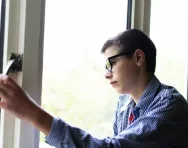Important update from TheSchoolRun
For the past 13 years, TheSchoolRun has been run by a small team of mums working from home, dedicated to providing quality educational resources to primary school parents. Unfortunately, rising supplier costs and falling revenue have made it impossible for us to continue operating, and we’ve had to make the difficult decision to close. The good news: We’ve arranged for another educational provider to take over many of our resources. These will be hosted on a new portal, where the content will be updated and expanded to support your child’s learning.
What this means for subscribers:
- Your subscription is still active, and for now, you can keep using the website as normal — just log in with your usual details to access all our articles and resources*.
- In a few months, all resources will move to the new portal. You’ll continue to have access there until your subscription ends. We’ll send you full details nearer the time.
- As a thank you for your support, we’ll also be sending you 16 primary school eBooks (worth £108.84) to download and keep.
A few changes to be aware of:
- The Learning Journey weekly email has ended, but your child’s plan will still be updated on your dashboard each Monday. Just log in to see the recommended worksheets.
- The 11+ weekly emails have now ended. We sent you all the remaining emails in the series at the end of March — please check your inbox (and spam folder) if you haven’t seen them. You can also follow the full programme here: 11+ Learning Journey.
If you have any questions, please contact us at [email protected]. Thank you for being part of our journey it’s been a privilege to support your family’s learning.
*If you need to reset your password, it will still work as usual. Please check your spam folder if the reset email doesn’t appear in your inbox.
What is selective mutism?

Starting school is a big and daunting step for children, and many of them take a while to find their voice amid the hustle and bustle of the classroom. But for some children, their reluctance to speak up is more than just natural shyness.
Selective mutism (SM) is a severe anxiety disorder that prevents people speaking in certain social or public situations, such as at school. It’s more common in children than adults, affecting about one in 140, and tends to affect girls more than boys.


Start a unique learning programme!
- Weekly programme for each school year
- Worksheets sent direct to your inbox
- Keeps your child's learning on track
Selective mutism explained
SM is different from other speech and language problems because children who are affected don’t have physical difficulty with speaking. ‘They are able to speak easily and freely with family or friends in environments where they feel at ease,’ says Lindsay Whittington, coordinator of the Selective Mutism Information and Research Association (SMIRA). But in a situation where they feel anxious and uncomfortable, such as school, they can’t speak at all.
SM is an extreme form of social phobia, and far from being ‘just’ shyness or an unwillingness to speak, it affects a child’s ability to function and communicate on a daily basis. ‘A child with SM doesn’t refuse or choose not to speak; they’re literally unable to,’ explains Lindsay. ‘The expectation of talking to people triggers a freeze response with feelings of panic, rather like a bad case of stage fright, and talking is impossible.’
This can lead to children becoming increasingly anxious about these situations, and doing everything they can to avoid them – such as refusing to go to school.
What causes selective mutism?
The causes of SM are not always clear, and it can be impossible to tell why a child develops it, although a tendency to anxiety may be inherited from a family member. Children with SM are also usually inherently shy and withdrawn. ‘Some children become overwhelmed by loud noises and big crowds, and struggle to process the sensory information they’re bombarded with,’ adds Lindsay. ‘This can cause them to “shut down” and be unable to speak.’
Children may be more likely to develop SM if they have a speech or language disorder or a hearing problem that makes it hard to communicate. Some also develop it as a result of severe separation anxiety, when they’re unable to speak when they’re away from their parents or other close family members.
Some children with SM may have another condition alongside such as autism or a developmental delay. It’s also more likely to be experienced by children who are learning a second language or have recently moved from another country.
Spotting the signs of selective mutism
Because many children are shy and quiet on starting school, the symptoms of SM can be overlooked. ‘The signs are usually noticed in early childhood, when a child begins to socialise beyond the family circle, such as at nursery or primary school,’ says Lindsay.
The main symptom of SM is a consistent inability to interact with certain people or in certain situations where they’re expected to speak. Outside their comfort zone they become may very still or rigid, with a frozen facial expression.
Some children with SM can manage a word or two, often whispered, or respond with gestures like nodding or shaking their head, but the worst affected can’t engage in any communication at all.
Children with SM are often seen by other people as sulky, rude or withdrawn, and may have temper tantrums when they get home from school as a way of releasing their pent-up tension.
How selective mutism affects children at school
‘Selective mutism can significantly hinder a child’s learning and development, as they can’t ask for help or participate fully in activities in the classroom or playground,’ explains Lindsay. It can lead to them falling behind with schoolwork and homework, as they’re not able to ask for clarification if they don’t understand. In severe cases, children might end up having accidents because they can’t ask to use the toilet; some even avoid eating or drinking at school so they don’t have to ask to go to the loo. They might also find it impossible to ask for help when they are injured or unwell.
Unsurprisingly, it can also affect their ability to make friends. They often find it difficult to look at people, and turn their heads away or avoid eye contact. They might struggle to laugh or smile, and have stiff, awkward body language that can be seen as unfriendly. But despite the outward signals, most children with SM actively want to make friends, and may have appropriate social skills other than their communication difficulties.
Treating selective mutism
Most children are able to overcome SM, but the longer they go without a diagnosis or treatment, the harder it is to beat. Untreated, it can lead to long-term social difficulties, low self-esteem and anxiety disorders, so it’s important to get help.
SM is usually diagnosed by a speech and language therapist or psychologist. You can either refer your child directly to a clinic (details available from your GP), or ask your GP or health visitor to make a referral. The treatment is usually a form of therapy, such as behavioural therapy or cognitive behavioural therapy (CBT). These both take a structured approach to unpicking the child’s anxiety; the therapist will understand that they’re unlikely to be able to speak in sessions at first, and will work around their difficulties.
It’s also important that your child has support from their school: for example, their teacher may need educating in the techniques that are being used in therapy, and to put them in place at school. ‘Some teachers, psychologists and psychiatrists based within schools are trained in treating and managing the disorder,’ adds Lindsay. ‘However, it depends on the school’s resources, and given the growing number of children suffering from SM, there’s a pressing need for improved awareness, cooperation and coordination between everyone concerned with the treatment of the child.’
You can also get support from charities and organisations such as SMIRA, and there are a number of Facebook groups for parents, including SMIRA’s own group.
Top tips to help your child
Knowing how to handle SM can be very difficult, and it’s natural to feel frustrated with your child at times. You can help them by:
- Not pressurising them or offering bribes or rewards if they speak.
- Letting them know you understand their anxiety, and encouraging them to take small steps – perhaps nodding or shaking their head in response to questions.
- Praising them for any efforts to speak, but not in public, as this can make them feel as if everyone is looking at them, which can heighten their embarrassment and anxiety: wait until you’re alone.
- Reassuring them that it’s fine to use non-verbal communication like smiles, eye contact and gestures until they feel comfortable speaking.
- Not avoiding social situations, but considering how you can make them easier for your child: for example, they might feel more comfortable with a family gathering that takes place at home, rather than in a restaurant.
- Talking to friends, family and teachers about their difficulties and asking them to allow your child to warm up in their own time, without pressure to speak.
- Giving them lots of love and physical affection as well as verbal praise and support.
‘She bit her hand so hard it bruised’
Rosemarie Hoyle is mum to four-year-old Alyssa, who has SM.
‘Alyssa was diagnosed with SM in May 2015. She wasn’t speaking at all at her two-year review, and although the health visitor came over regularly to try to build a rapport with her, she remained mute at every meeting. When she started nursery, she was mute there, and had anxiety meltdowns before going in. In the whole time she was at nursery, she spoke about four times in total.
‘During her induction day at school Alyssa was so anxious that she bit her hand so hard it bruised. Once she started, she stuck to one member of staff; she never spoke to her, but occasionally answered non-verbally with shakes of the head.
‘Alyssa’s early diagnosis has enabled us to research how to support her. She’s a real chatterbox at home, but only around me, her dad and her siblings. Even with her aunts and uncles, she goes mute, and she often reverts to being mute if a friend comes over, although recently she’s managed one-word answers.
‘Because SM is anxiety-based, we never allow anyone to pressure Alyssa as it could make it worse. We continue to encourage her and build her confidence in social settings, but we’re prepared for it to be a long process.’








